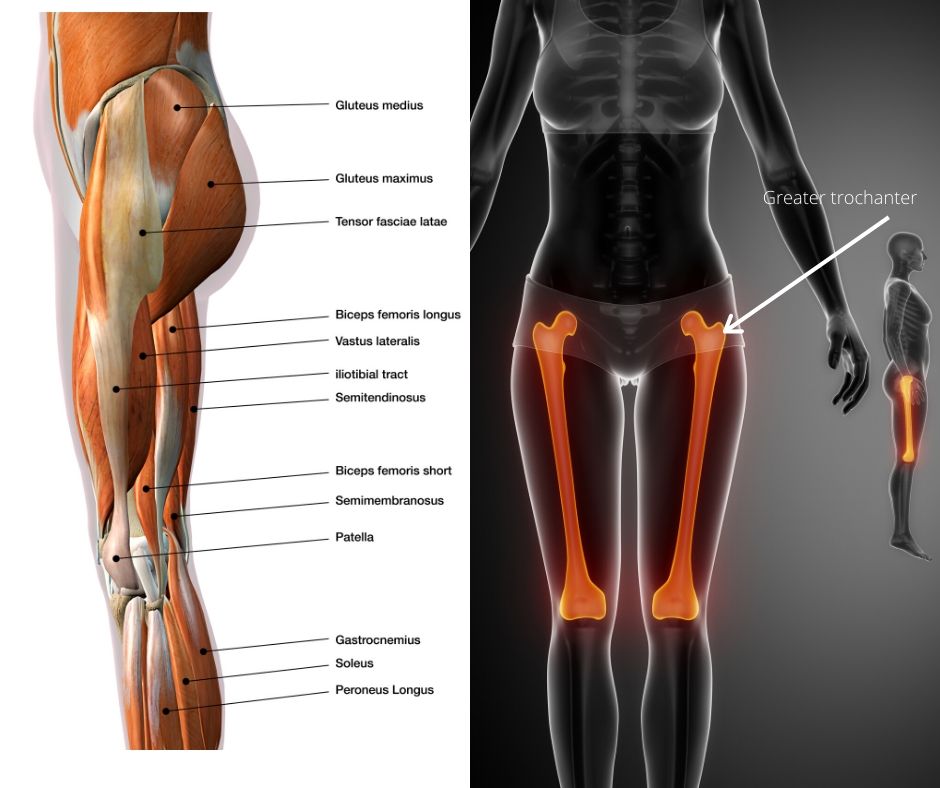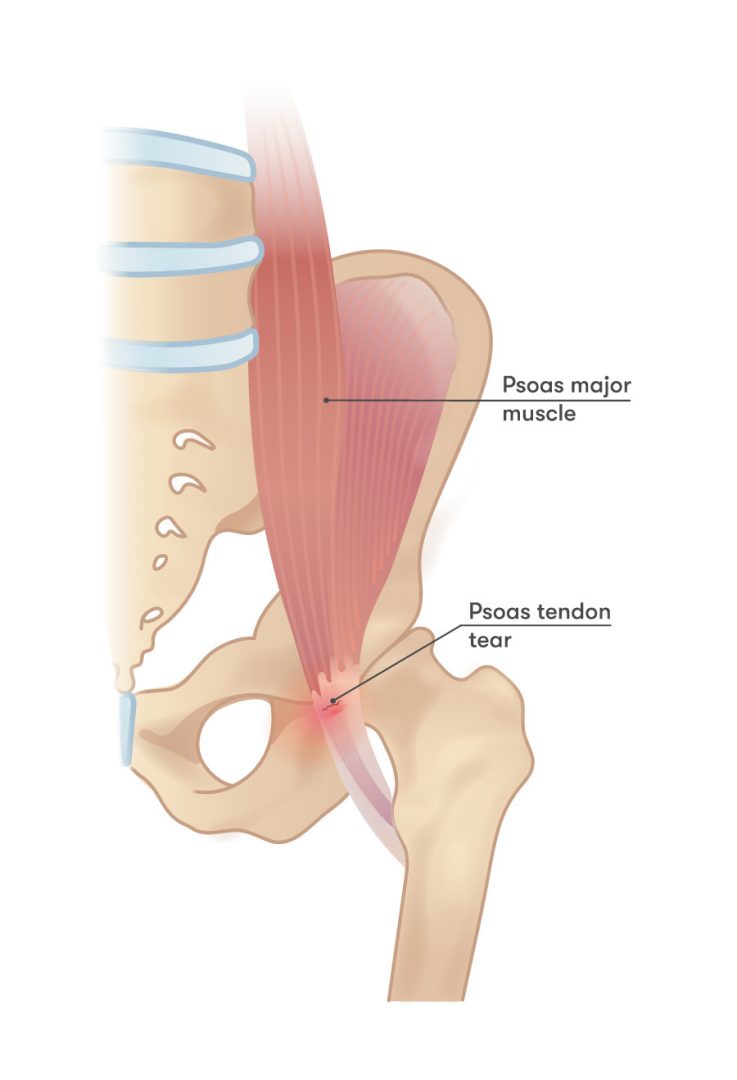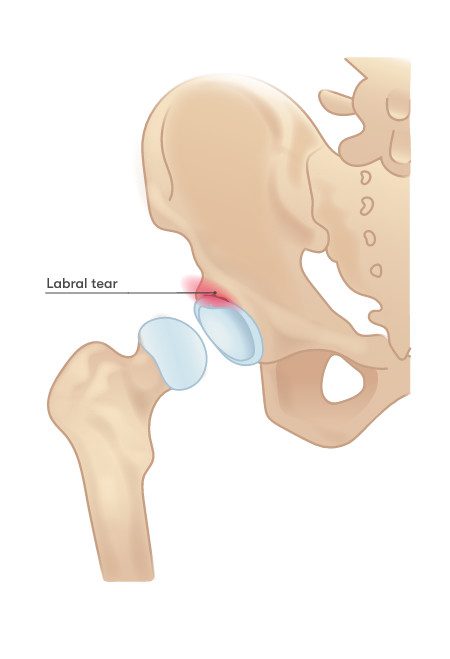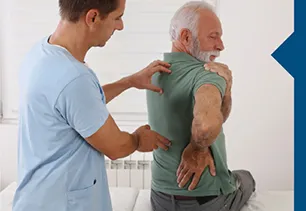
Snapping hip syndrome is a condition characterized by a click that you can feel and/or hear in the front or the side of the hip. It can occur with or without pain.
There are two main classifications of snapping hip (extra-articular and intra-articular) based on the source of the snapping. Extra-artciular means “outside the joint”. Intra-articular means “within the joint”.
Extra-articular snapping hip syndrome is subdivided into two subcategories:
A) External Snapping Hip

This occurs when the iliotibial band (a band of tick fibers that runs along the outside part of the thigh) moves over the greater trochanter (a bony prominence on the side of your leg) during certain hip movements.
B) Internal Snapping Hip

This occurs when the psoas (hip flexor muscle) rolls over the front of the hip bone, or the ligaments of the hips roll over the thigh bone or tissues of the hip joint.
Intra-articular Snapping Hip

This is due to labral (cartilage that lines the socket of your hip) tears or loose bodies (free floating pieces of bone or cartilage).
Signs and symptoms
- Snapping sensation and/or sound in front, side or back of the hip when the hip is lifted, lowered, rotated, or swung.
- May or may not cause pain
- Clicking may be accompanied by weakness due to compensation of surrounding structures or postural deficits (If no pain is present and no weakness is observed, treatment is not warranted.)
- Tightness in the muscles surrounding the hip
- Can become painful over time due to irritation of tendon or bursa
Treatment
Your physical therapist will perform a thorough history and perform special tests to determine where the snapping is coming from and to identify restrictions in mobility, strength, stability, or flexibility of the structures surrounding the hip. Manual techniques will be performed to restore normal movement in hip. An individualized home exercise program will be developed to encourage self-management of symptoms.
Common Exercises Prescribed
Clamshell
Begin lying on your side with your knees bent and your hips and shoulders stacked. Engage your abdominals and raise your top knee up toward the ceiling, then slowly return to the starting position and repeat 20 repetitions on each side. Make sure to keep your core engaged and do not roll your hips forward or backward during the exercise.
Hip Flexor Stretch
Begin in a half kneeling position with one knee bent in front of your body. Tighten your abdominals, tilt your pelvis backward, and gently push your hips forward. You should feel a stretch in the front of your hip. Make sure to keep your hips facing forward and back straight during the exercise.
Psoas Ball Release
Begin lying on your front, resting on your forearms. Place a small, firm ball below your stomach, two inches to the side of your belly button. Slowly roll your body up and down on the ball until you feel a stretch or muscle release. Hold on any tight spots 1-2 minutes.
Iliotibial Band Stretch (ITB stretch)
Begin in a standing upright position next to a wall. Cross your outside leg over the other and place your arm against the wall. Gently push your hip toward the wall until you feel a stretch in the side of your leg and hold. Make sure not to lean forward or backward.
Don’t wait until your symptoms stop you from doing the things you love. Contact us today!

